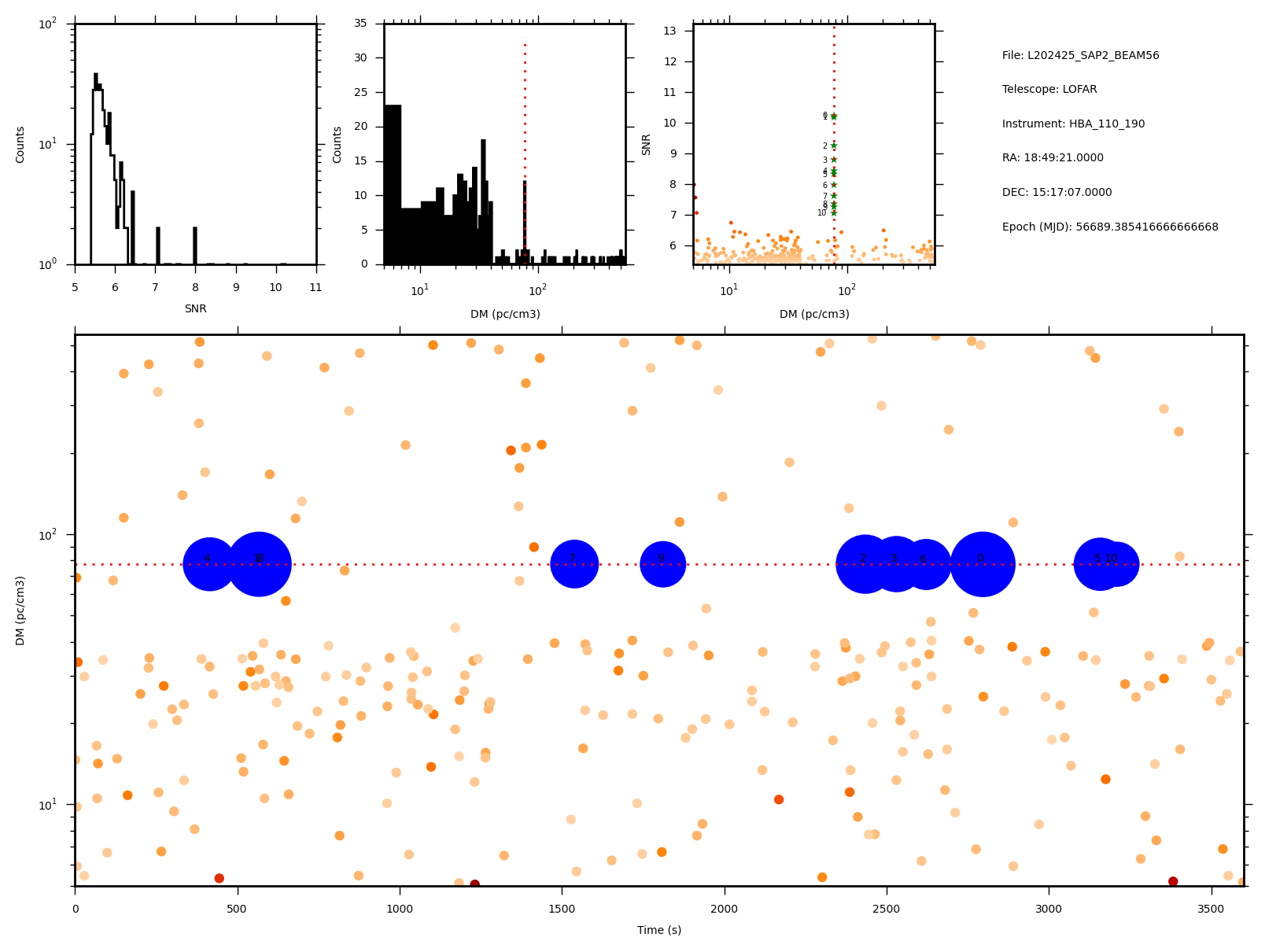Daily Image
10-04-2015LOFAR Discovers its First RRAT
| Submitter: | Daniele Michilli |
| Description: | Michilli, Hessels, Cooper, Stappers, Kondratiev & van Leeuwen Rotating RAdio Transients (RRATs; McLaughlin et al. 2006) are sporadically emitting pulsars. Finding more RRATs is important in order to have a complete picture of the radio-emitting neutron star population. Also, understanding why their behavior is in some cases quite different compared to "steady" pulsars is important for understanding the pulsar radio-emission mechanism. LOFAR's first RRAT discovery is shown in this plot, where the pulses from the neutron star are highlighted in blue. The bottom panel of the plot shows all the significant pulses detected in beam 56 of sub-array pointing 2 of observation L202425. These are plotted as a function of dispersion measure and time. The discovered RRAT has a dispersion measure close to 78 pc/cm3 and a period of 2.23 s (or some integer fraction of this). About ten bright single pulses have been detected from the source in the one-hour discovery observation. The discovery has been made as part of the LOFAR Tied-Array All-Sky Survey (LOTAAS), an ongoing survey for pulsars and fast radio transients, which has previously discovered another 13 new pulsars (www.astron.nl/lotaas). The irregular emission of RRATs makes them difficult to detect in periodicity searches. For my PhD I am developing new techniques to sift through the LOTAAS data in order to find more individual dispersed pulses. This is a very challenging task because each LOTAAS pointing contains 222 beams, each with thousands of frequency channels, and millions of time samples! |
| Copyright: | Daniele Michilli / PWG |
| Tweet |  |
